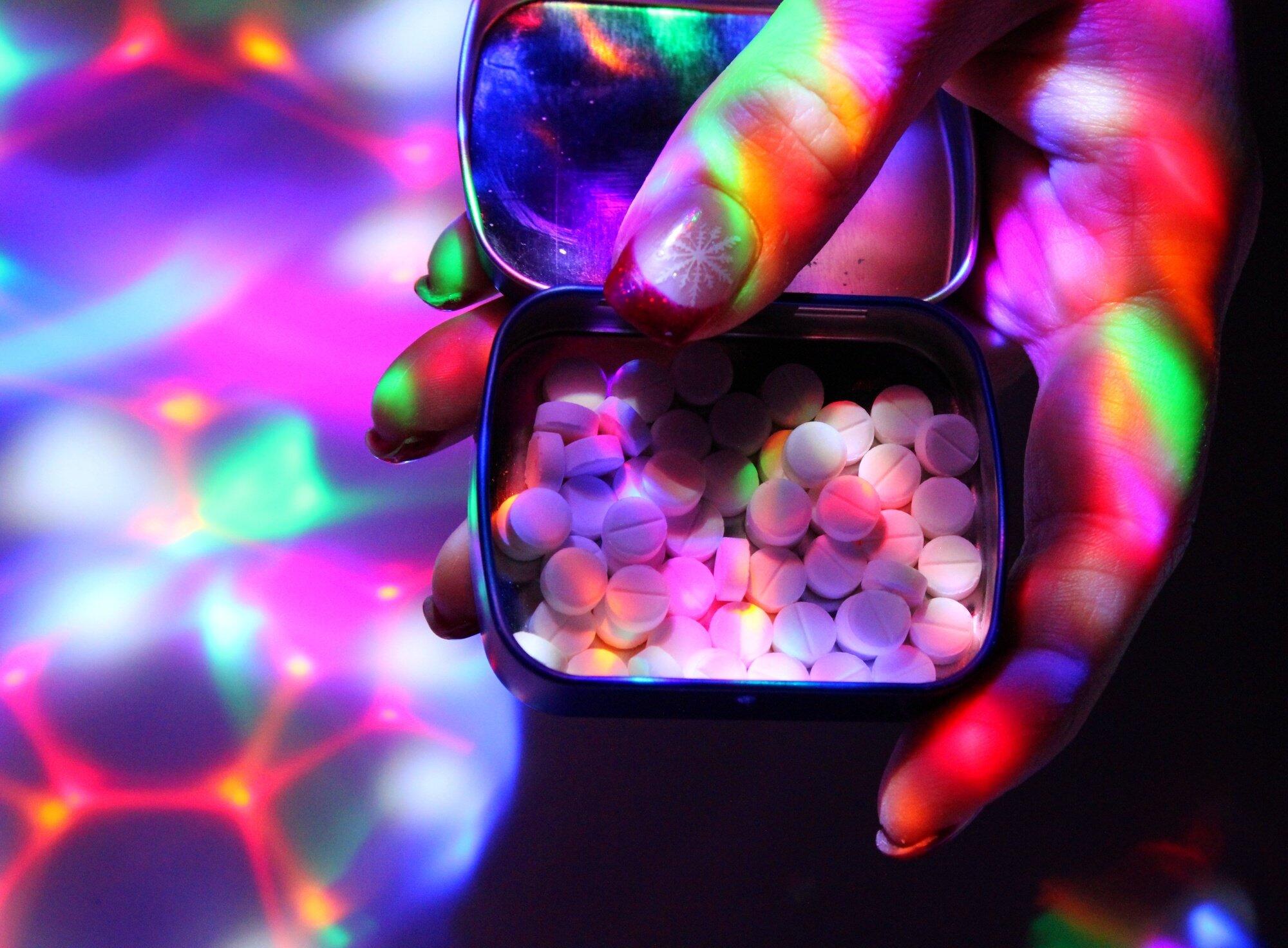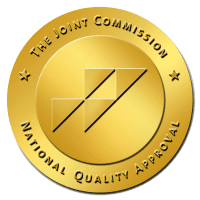When the lights dim and the music swells in a crowded club, it’s not just the rhythm that pulsates through the veins of partygoers. Often, it’s something more. In the world of high-energy nightlife, two names frequently surface: Molly and Ecstasy.
These substances, though commonly misunderstood as interchangeable, hold distinct identities that go beyond their street names. This article peels back the layers of misconception to reveal the stark distinction between Molly vs Ecstasy.
Read on as we get into the heart of what defines and differentiates them to reshape your understanding and decisions in the vibrant world of party drugs.
What is Molly?
Molly, scientifically known as MDMA (3,4-methylenedioxymethamphetamine), stands out in the landscape of party drugs. It’s a version of MDMA that’s gained notoriety for its high purity compared to other forms of the drug.
This synthetic drug is famous for its stimulant and hallucinogenic effects, which include enhanced sensory perception and a heightened feeling of emotional connection with others.
In the United States, the use of MDMA has been notable. As of 2021, about 0.8% of people aged 12 or older, approximately 2.2 million individuals, reported using MDMA in the past year.
The prevalence is even observed among younger demographics, with about 0.6% of 8th graders, 0.7% of 10th graders, and 1.4% of 12th graders admitting to MDMA use in 2022.
The attraction to Molly often lies in its reputation as a pure form of MDMA, free from the adulterants commonly found in ecstasy pills. However, this perception can be misleading, as Molly itself can be cut with other substances.
It’s crucial to understand that despite its ‘pure’ image, Molly can still contain harmful additives. These can range from benign substances to potentially neurotoxic chemicals, which can pose significant health risks to users.
What is Ecstasy?
Ecstasy, commonly known as “E” or “X,” is a term typically used to describe MDMA in pill form. Its journey to notoriety began as a potential therapeutic tool by enhancing empathy and communication in psychotherapy.
However, it quickly gained traction on the party scene for its euphoric effects. Over time, concerns about its safety, legality, and unpredictable ingredients have grown.
Ecstasy pills often contain not just MDMA, but other substances like caffeine, amphetamines, or more hazardous drugs like bath salts. This varying composition means users often consume unknown substances alongside MDMA, which increases the risks associated with its use.
Despite its popularity, there is an ongoing debate about the addictiveness of Ecstasy. While many users have reported a sense of dependence on the euphoric effects of the drug, clinical studies suggest that its addictive potential may be less than that of other substances.
This dependence largely stems from the drug’s ability to flood the brain with serotonin and norepinephrine. It can lead users to continually seek out these positive feelings.
Molly vs Ecstasy
After understanding what Molly and Ecstasy are individually, it’s crucial to compare them side by side to grasp their similarities and differences. While both derive from MDMA, their form, usage, and risks differ.
Similarities
Both Molly and Ecstasy share the same active ingredient: MDMA. This means they can produce similar effects like heightened sensory perception, emotional warmth, and a feeling of connection with others.
These effects make them popular in social settings, particularly at raves, music festivals, and clubs. Their primary action in the brain involves increasing levels of neurotransmitters like serotonin, which contribute to their characteristic euphoria.
Differences in Form and Composition
Molly is often found in crystalline or powdered form, while Ecstasy is commonly seen in pill form. This difference in form can affect how they are consumed.
Molly is sometimes considered purer, but this is not always the case. Both can be cut with other substances, ranging from benign fillers to harmful adulterants like amphetamines, ketamine, or even substances like the bath salts drug.
Usage and Perception
There’s a generational shift in terminology and preference, with ‘Ecstasy’ being more associated with the rave culture of the 80s and 90s, while ‘Molly’ is a term that gained popularity in more recent times. Particularly among EDM enthusiasts.
This shift also reflects the perceived purity of the substances, where Molly is often (but not always correctly) assumed to be purer than Ecstasy.
Health Risks
Both substances carry significant health risks. These include dehydration, overheating, and heart problems due to their stimulant effects. Long-term use can lead to more severe consequences like cognitive impairment, emotional disorders, and even the potential for addiction.
Health Risks and Misconceptions
Understanding the health risks and misconceptions surrounding Molly and Ecstasy is vital for informed decision-making. These risks span both physical and psychological domains and are often underestimated due to prevailing misconceptions.
Physical Health Risks
The physical health risks associated with MDMA use are diverse and serious. Neurotoxicity is a primary concern, as MDMA can damage serotonin-using neurons in the brain. This can potentially lead to lasting brain function changes.
Cardiovascular issues are also notable. MDMA causes an increase in heart rate and blood pressure. This is particularly risky for individuals with heart conditions.
In the heated environment of parties and clubs, MDMA users face the dangers of hyperthermia and dehydration. These conditions can escalate to kidney failure in severe cases. This is where muscle tissue breakdown releases harmful toxins into the bloodstream.
Psychological Health Risks
On the psychological front, MDMA use can significantly impact mental health. Users may experience an exacerbation of anxiety and depression. The drug can also trigger severe mood swings, paranoia, and confusion.
Contrary to some beliefs, MDMA can lead to psychological dependence. Users may find themselves repeatedly seeking the drug for its euphoric effects, even though it is not as physically addictive as substances like nicotine or heroin.
Common Misconceptions
Dispelling myths about MDMA is crucial for safety. A widespread misconception is that Molly, typically in powder or crystalline form, is purer than Ecstasy, which is usually in pill form. However, both can contain various adulterants, making them equally risky.
Another false belief is that small doses of MDMA are safe. Even in lower doses, MDMA can have unpredictable effects, particularly when combined with other substances or alcohol.
The long-term effects of MDMA use are often misunderstood. Occasional use is not necessarily harmless, as it can lead to neurotoxic effects and psychological dependency.
There is also a tendency to underestimate the risks when using MDMA in what is perceived as a controlled environment, like a party with friends. However, the drug’s unpredictable nature and individual physiological responses mean that risks are always present.
Lastly, the assumption that MDMA is non-addictive is misleading. While its potential for addiction may be lower than other drugs, psychological dependence is a real possibility. Especially for those with a history of substance abuse or mental health issues.
The Role of Rehabilitation Centers in Recovery
Rehabilitation centers play a pivotal role in the recovery process for individuals struggling with MDMA abuse. These centers provide structured environments essential for healing and growth by offering various treatments tailored to meet the unique needs of each patient.
The choice between inpatient and outpatient treatment, as well as the integration of dual diagnosis treatment, significantly influences the recovery journey.
Inpatient Treatment Programs
Inpatient programs offer intensive care that is often necessary for individuals with severe substance use disorders. These programs typically include:
- Group therapy options focused on communication skills
- Anger management
- Relapse prevention
Outpatient Treatment Programs
Outpatient treatment provides flexibility by allowing individuals to live at home while receiving necessary treatment. This is particularly beneficial for those with mild to moderate substance use disorders, or as part of a long-term treatment plan.
Outpatient programs often include a range of services such as:
- Counseling
- Therapy
- Education
- Recovery support
Dual Diagnosis Treatment
For individuals with co-occurring mental health and substance use disorders, dual diagnosis treatment is crucial. This approach simultaneously addresses both conditions, recognizing the intertwined nature of mental health and substance abuse.
Key components include:
- Assessment
- Individual and group therapy
- Medication management
- Relapse prevention
The Path to Recovery
Recovery from MDMA use is a multifaceted process that involves more than just the cessation of drug use. It requires a comprehensive approach that addresses the physical, psychological, and behavioral aspects of addiction.
Effective drug abuse rehab incorporates evidence-based therapies like:
- Cognitive-behavioral therapy (CBT)
- Family therapy
- Relapse prevention strategies
CBT, for instance, has been shown to be highly effective in long-term recovery from addiction. It can help individuals recognize and transform negative thought patterns and behaviors.
Treatment plans should be personalized to address each patient’s unique circumstances. By considering individual history, lifestyle, and goals, these plans provide the most effective care and support for the recovery journey.
A strong support network is critical for recovery. This network includes:
- Peers
- Family members
- Mental health professionals
Participation in support groups and counseling programs offers additional support.
Moving Towards a Healthier Tomorrow
In the intricate interplay of Molly vs Ecstasy, understanding is the first step toward safety and responsible choices. At Purpose Healing Center, we’re committed to guiding individuals on their path to recovery, offering a beacon of hope amid the chaos of substance misuse.
Our holistic approach, tailored to each individual’s journey, sets us apart. If you or someone you know is navigating the complexities of substance use, contact us for a free assessment. Let’s embark on a journey towards healing together.



